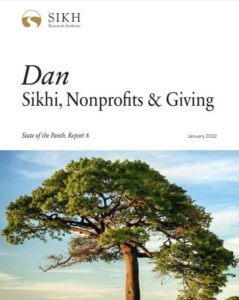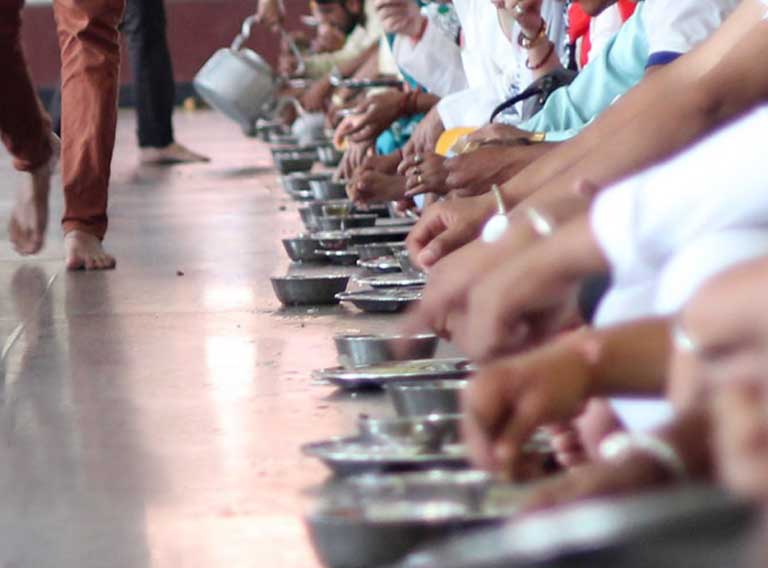Dan: Sikhi, Nonprofits & Giving -A comprehensive SikhRI report
![In its State of the Panth series, the US-based Sikh Research Institute (SikhRI) has released its eighth research report on Dasvandh or tithes as it is generally known in the English world, based on an extensive global survey of individuals through 23 countries. Entitled, Dan: Sikhi, Nonprofits & Giving, the 63-page report provides a comprehensive look into the meaning of giving in the Sikh paradigm. It provides a historical perspective and the current meaning of giving in the Sikh concept […]](https://www.theworldsikhnews.com/wp-content/uploads/2022/01/Daan-1-360x266.jpg)
In its State of the Panth series, the US-based Sikh Research Institute (SikhRI) has released its eighth research report on Dasvandh or tithes as it is generally known in the English world, based on an extensive global survey of individuals through 23 countries. Entitled, Dan: Sikhi, Nonprofits & Giving, the 63-page report provides a comprehensive look into the meaning of giving in the Sikh paradigm. It provides a historical perspective and the current meaning of giving in the Sikh concept and precept. The report looks into the shortcomings and the need to reorient our authentic culture of philanthropy. Significantly, the report also provides recommendations on giving in the true Nam-Dan-Ishnan perspective.
WITH THE GROWTH OF NONPROFITS AS IMPORTANT PLAYERS in the social, health and religious sectors, this report has come at the opportune time and hopefully will enable those who care to delve deep into it to understand and then contribute to causes keeping the true Sikh ethos in mind.
As the world becomes more interconnected, the SikhRI report on Giving, attempts to “understand how some have an abundance of monetary wealth, and others do not, and the more we understand the various needs unaddressed in our backyards and abroad. People want to give. People need to give. But do we understand what it means to give?”
The report analyses ideas conveyed in the Nam-Dan-Isnan (Identifying-Giving-Cleansing) doctrine from a Gurmat (Guru’s Way) perspective, as inferred from Bani (wisdom), Tavarikh (history), and Rahit (lifestyle).
As Sikhs, we are all aware of our individual Dasvand duty, but collectively we have fallen short. How can we build on our Guru-bestowed culture of giving and philanthropy?
“While the affluence of the global Sikh diaspora has grown exponentially, so too have the inequalities in our society,” said Kulvir Singh, SikhRI Chair. “As Sikhs, we are all aware of our individual Dasvand duty, but collectively we have fallen short. How can we build on our Guru-bestowed culture of giving and philanthropy? This report provides insights and implications relevant for every member and institution in our Panth.”
 Readers can access the extremely well-written, beautifully designed, profusely annotated with Gurbani, details of contributions by Maharaja Ranjit Singh, the annual receipts and spending of main Sikh bodies worldwide, details of the survey and possible parameters for donations, by clicking the following link: Dan: Sikhi, Non-Profits and Giving.
Readers can access the extremely well-written, beautifully designed, profusely annotated with Gurbani, details of contributions by Maharaja Ranjit Singh, the annual receipts and spending of main Sikh bodies worldwide, details of the survey and possible parameters for donations, by clicking the following link: Dan: Sikhi, Non-Profits and Giving.
The report analyses why Sikhs are more prone to immediate-disaster charity than long-term philanthropy and makes a case for change.
The SikhRI conducted a global survey of 726 self-identified Sikhs from 23 countries to learn more about the opinions on giving in the Sikh community. The majority of respondents said that impact and outcomes most inform their perspective on the effectiveness of Sikh nonprofits, followed by public relations, social media and transparency.
Immersing ourselves in Sikh ethos paired with the global survey allowed us to see Dan or giving from a variety of interesting and even surprising perspectives.
Harinder Singh, SikhRI’s Senior Fellow, remarked: “Immersing ourselves in Sikh ethos paired with the global survey allowed us to see Dan or giving from a variety of interesting and even surprising perspectives. We learned that although 54% of respondents said they were more likely to support long-term philanthropy rather than short-term charity projects monetarily, the data shows that the majority of community funds are directed to charity rather than philanthropy. We were interested in why that is the case, how to revive the Guru’s paradigm, and what is the state of current Sikh nonprofits.”
The report concludes with recommendations on both individual and institutional levels providing a clear directional framework for applying the principles of Nam-Dan-Isnan. The Sikh nonprofit checklist, included in the report, provides criteria that individuals and institutions can use to evaluate nonprofit organizations from a Gurmat perspective.

Jasleen Kaur, SikhRI’s Researcher said: “We hope that providing a complete picture of how giving is understood both in the Guru Granth Sahib and in Sikh history, will help the Sikh community model current projects around long-term planning and institution building.”
We hope that providing a complete picture of how giving is understood both in the Guru Granth Sahib and in Sikh history, will help the Sikh community model current projects around long-term planning and institution building.
Overall, the report contributes to the global discourse about Sikh notions of giving and supports its findings with Gurmat-based sources and opinions from the Panth itself. A complete set of raw data is included as a separate document to incentivize further academic research.
Significantly, “this report makes recommendations based on Gurmat to help individuals and institutions better understand giving within the Nam-Dan-Isnan doctrine. It also provides criteria that individuals and institutions can use to
evaluate nonprofit organizations from a Gurmat perspective.”
 Print
Print

 181
181

